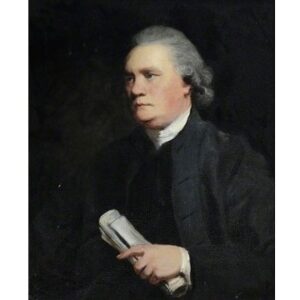William Mason emerged as a preeminent American pianist and composer during the 19th century. Mason’s piano compositions were lively, entertaining, and widely admired. The majority of his compositions incorporated standard musical genres of the mid-nineteenth century. His exceptional musical prowess and innate aptitudes additionally granted him the privilege of collaborating with renowned pianists such as Ignaz Moscheles, Franz Liszt, and Alexander Dreyschock. In addition to his compositions, he occupied a multitude of positions within musical institutions, an indication of his dedication and commitment to the field of music. A subtle evolution occurred in Mason’s body of work over the course of his career, which lasted approximately sixty years. He was an accomplished pianist, virtuoso, and encouraging instructor who put forth considerable effort to inspire excellence in others. Continue reading to learn more about the career and compositions of this distinguished composer.
Infancy and Early Life
William Mason, who was born on January 24, 1829, in Boston, New York, belonged to a musical family. During that period, Mason and Hamlin Company, a piano manufacturing company, was co-founded by his younger brother Henry Mason and Mason, whose father was a prominent figure in American church music. Despite being born into a musical family, Mason’s family did not provide significant support or encouragement regarding his pursuit of a music career. Mason vehemently declined his father’s insistence that he pursue a pastoral vocation. In 1845, he commenced his piano studies at the Boston Academy of Music under the tutelage of Henry Schmidt.
Additionally, he composed and published his opus ‘Deux Romances Sans Paroles’ for the piano at the same time. William Mason presented his inaugural composition at the Boston Academy of Music in 1846. Specifically, he performed the Variations on the Air from Joseph, Opus 20, by Méhul. After a triumphant premiere at the Boston Academy of Music, William Mason made the decision to relocate to Europe.
Musical Instruction Of Mason
In 1849, Mason traveled to Germany to pursue additional piano studies. During his five-year sojourn, he traveled to numerous locations, including Leipzig, Prague, and Weimar. He received piano instruction in Germany from Ignaz Moscheles, Moritz Hauptmann, Alexander Dreyschock, Ernst Friedrich Eduard Richter, and other luminaries of the era. His status as the inaugural American piano pupil of Franz Liszt and Ignaz Moscheles was fortuitous. In addition, he published a number of scholarly works for piano students during this period.
The rise in Mason’s prominence and sway was substantiated by the dedication of Edward MacDowell’s second piano sonata to William Mason (1860-1908). William Mason’s intricate arpeggio figuration, cadenza-like embellishments, and masterful utilization of octaves were all manifestations of the profound impact that legendary musicians such as Liszt and Sigismond Thalberg had on his musical style.
An Occupation About William
William Mason reestablished himself in the United States as a concert pianist in 1854. He effectively established a commendable standing by means of numerous concert travels. However, Mason came to the realization within a year that his musical excursions would not produce anything of significance. Subsequently, he relocated to New York City, where he continued to operate as a composer, performer, and educator for the remainder of his life. A significant development of this era was the establishment of a chamber ensemble, which included Mason and the violinist Theodore Thomas.
William Mason gained notoriety not only for his literary contributions but also as a piano pedagogue. Throughout his tenure, he occupied a number of significant positions at musical academies. Memories of a Musical Life, an enlightening autobiography authored by Mason, was published in New York in 1901. Mason continued to practice as a professional composer and educator, operating primarily from his Steinway Hall studio. In contrast to the melodic poeticism and dance-like patterns that characterized his works from 1857 to 1890, those composed between 1890 and 1905 are primarily comprised of intricate and personal idioms borrowed from Johannes Brahms, Schumann, and Fauré. William Mason, who was 79 years old, passed away in New York on July 14, 1908.
Notable Works Of Mason
Op. 6: Silver Spring, for Piano
Op. 50 Capriccio Fantastico, for piano; Op. 24 Rêverie Poétique; Op. 24 Improvisation; Op. 51 Valse-Caprice; Op. 17 Deux Humoresques de Bal; Op. 23 La Sabotière: Danse aux Sabots; Op. 33 Capriccio Fantastico, for piano.
Lullaby, Op. 10; Badinage, Op. 27; Caprice Grotesque, Op. 22; Ballade et Barcarolle, Op. 22; for piano, four hands;
Three-track Préludes (3) for piano
Op. 48: Amourette for Piano
Op. 5: Valse de Bravoure, for piano
Estimated Net Worth
Mason is among the wealthiest American guitarists. Our research, Wikipedia, Forbes, and Business Insider indicate that Mason Williams has a net worth of $5 million.


